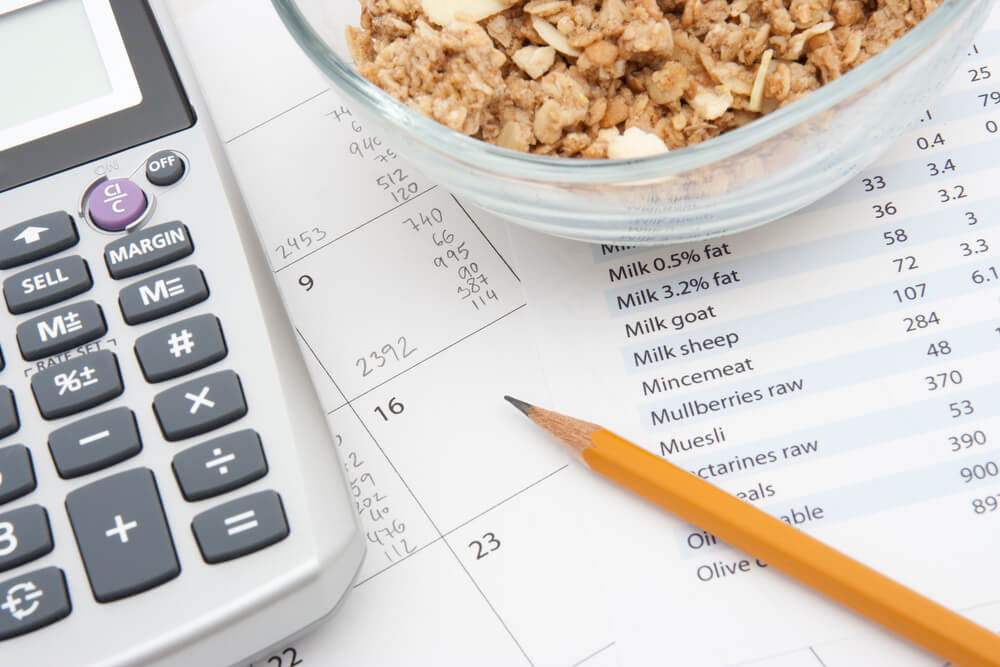The pizza looks delicious, bubbling with cheese and studded with pepperoni. And then you see the caption: “A 165-pound woman has to jump rope for 45 minutes to burn off the calories in two pieces of pepperoni pizza.” Four more slides show similarly decadent foods and the exertions required to negate their caloric content.
These arresting images accompanied CNN.com’s coverage of a study recently published in the American Journal of Public Health. As CNN reported, “The number of calories in a food or beverage item doesn’t mean much to many folks. But showing people how much activity they would have to do to burn those calories off might be enough to convince us to ditch our unhealthy habits.”
It was a good news hook and the story got a lot of play. Some commentators joked that we should replace the calories on nutrition facts label with the miles you’d need to run to burn that food off. Although this might be more motivating for some people, I’m not crazy about this approach.
What the Study Found
First, a word or two about the study that prompted CNN’s piece. Researchers from Johns Hopkins University tested the impact of various kinds of calorie messaging on teenagers buying sodas at corner stores in low-income neighborhoods in Baltimore. In other words, this was a very specific population in a very specific environment. The fact that calorie counts don’t mean much to soda-buying 13-year-olds is not all that surprising.
The researchers found that translating calorie counts into exercise equivalents was more likely to motivate these teenagers to choose a lower calorie option – and maybe the same would be true in other circumstances as well.
A lot of adults also seem to have difficulty interpreting information about calories on nutrition facts labels or menus. Many have no idea how many calories they should be eating per day or per meal. So they have no idea whether 800 calories is a lot or a little (or at least that’s what they claim!). And I do think it’s useful to remind people that how much they should eat depends in part on how active they are.
Nonetheless, suggesting that you need to “exercise off” every calorie you eat could end up confusing people even more.
What’s Wrong With Relating Food to Exercise?
Exercise is just one of the ways that you expend calories. Activites that you might not think of as exercise, like folding laundry or walking to the bus stop, also burn calories. Chewing gum burns calories, as does fidgeting. Even lying in bed sleeping, you burn around 50 calories an hour. In fact, over half the calories you burn every day are expended on basic biological functions like maintaining your body temperature, breathing, and digesting your food.
If you were to “exercise off” every calorie you ate, you’d end up with a serious deficit. Of course, that’s unlikely to happen (unless you’re unlucky enough to be selected as a contestant on The Biggest Loser). But this sort of confused thinking is common – especially among young women who monitor every calorie with diet and fitness trackers.
As Nutrition Diva fan Cathy commented on the Nutrition Diva Facebook page, “I feel that this could trigger compulsive behavior, she writes. “As in: ‘I ate a piece of pizza, so if I don’t jump rope for 45 minutes, I’ll be fat!’ I’d much rather see a bar graph of the calories in the food compared to the total caloric recommendation for the day for weight maintenance.”
I think Cathy’s suggestion is right on the money. First, get a sense of how many calories you should be eating every day. This number will be based on your height, weight, age, sex, and daily activity level – including any exercise you do. Almost any online calorie counting program or mobile app has a tool for this. But, as I explained in a previous episode, the number you get is going to be a rough estimate. That’s OK.
It’s not necessary to know your calorie expenditure down to the last calorie. But it is important to know whether your calorie needs are closer to 1,600 or 2,500 per day. Once you have a ballpark number, you can compare calorie counts on food packages and menus to that. If your daily needs are about 1,600 calories, an 800-calorie burger-and-fries-combo represents half your allowance for the day. If your daily needs are 2,500 calories, it’s about a third. Either way, unless you’re biking over the Alps, it’s not a between-meal snack.
Calorie awareness is important but it’s certaintly not the only thing that matters – either for your health or your weight. Think of it as the long drive that gets the ball on the green. Once there, other strategies, such as paying attention to the quality of your calories, will help you sink the putt. But it doesn’t make sense to pull out a putter while the ball is still on the tee.
Questions? Comments?
You know what to do! Post them in the comment section below or on the Nutrition Diva Facebook page!
References
Sara N. Bleich, Colleen L. Barry, Tiffany L. Gary-Webb, and Bradley J. Herring. (2014). Reducing Sugar-Sweetened Beverage Consumption by Providing Caloric Information: How Black Adolescents Alter Their Purchases and Whether the Effects Persist. American Journal of Public Health. Link to abstract




